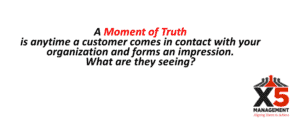Do you have team engagement on your mind? Now more than ever, with many businesses operating from a remote or hybrid model, it’s a challenge that plagues leaders in several industries.
Team Engagement Requires Creativity and Innovation
Despite the best efforts of management teams to maintain morale and team engagement throughout the upheaval of the past year and a half, employees continue to drift back into old patterns and struggle to find their way back to a new normal. Not only does this negative culture affect traditional business metrics, such as productivity, but it also acts as a major impediment to innovation and growth by disrupting efforts at improvement and the tackling of new challenges.
This pervasive negative culture is even more of a problem during an economic downturn. These are times when businesses need to be especially creative and flexible to adjust to the harsher conditions they face.
(Don’t miss this post with five customer service skills you must master to stand out from your competition and grow your business, even in tough times)
Unfortunately, precisely when a business needs creativity, innovation, and entrepreneurship the most are often the times when their employees are least likely to demonstrate team engagement. Or, more specifically, the necessary positive cultural attitude toward their work and the company.
(A lack of team engagement can ultimately lead to poor employee retention rates. Here’s what employers can do)
Creating a Culture of Positive Entrepreneurship
A culture of positive entrepreneurship that runs right through the company and across its employees requires more than the occasional pep-talk. Such a culture is the product of an everyday commitment. A commitment to structuring the business in a way that promotes positive employee attitudes.
This kind of structure naturally makes employees feel like they are an important part of creating a product or service that brings substantial satisfaction to its consumers. Naturally, everyone wants to feel as if what they do is important and valued. But it can be difficult for many employees to see the impact of their contribution on the overall reputation of the company and the quality of its products and services. And can you guess what happens then? You guessed it: a lack of team engagement.
There are techniques that can help to structure a business in a better way, where employees naturally develop this sense of engagement and ownership on their own. These techniques provide every employee with a sense of the importance and meaning of their role in the greater structure of the overall company. They also drive employees to develop a sense of responsibility that doesn’t require constant reinforcement from management.
This organic culture of team engagement means all employees will naturally look for ways to improve what they do. They will want to perform above and beyond the expected through self-directed innovation and entrepreneurship.
(Your company culture isn’t something you wing. Read why it deserves a strategy in this post)
The entrepreneurship your employees engage in can boost your company’s opportunities amid tough economic conditions, much like the ones many businesses face today.
Positive attitudes come after letting go of the past and welcoming what’s to come. This takes courage, doing things a little differently. Ditching the conventional opens up limitless possibilities. Try to aim beyond the competitive landscape, trends move fast, and you have to be faster.
Team engagement comes with small steps every day
Here are some ways small everyday team engagement can drive huge results inspired by Josh Linkner’s Big Little Breakthroughs.
- Learn to love the problem. And not just the problem, but the process of working through it. Encourage your team to stay open to different paths and enjoy the ride.
- Start making changes now. Don’t wait until you are “ready,” just get going.
- Test it out. By exploring different paths and frameworks, you’ll find your organization’s sweet spot. Your team and customers will thank you for being flexible and finding the right fit.
- Reconstruct. Ensure your team doesn’t grow too attached to a specific framework. Be open to deconstructing and rebuilding. It will keep you on the cutting edge and avoid complacency.
- Ditch the conventional. This is all about new ideas which bring about better outcomes. Don’t fear the unknown—go for it.
- Get resourceful and do more with less. Make your work more about ideas and ingenuity and less about resources. Lean on your people to get creative with what you have.
- Add a little wow factor. How can you surprise and delight your audience?
- Lean on your resilience. Understand that with ideas and growth will be setbacks. What really matters is how you and your team keep going.
Did you learn a lot about team engagement in this post? Here are three more posts to read next:




